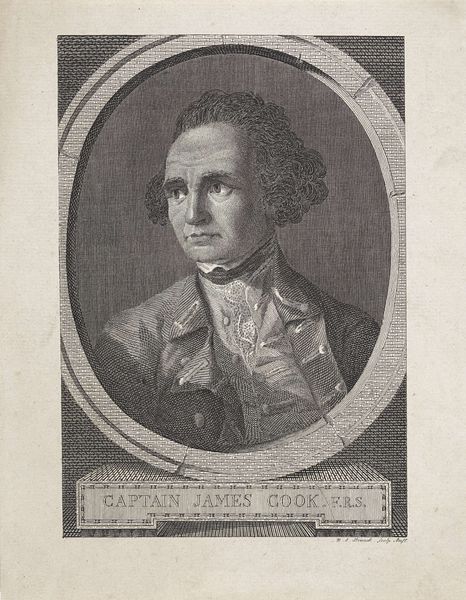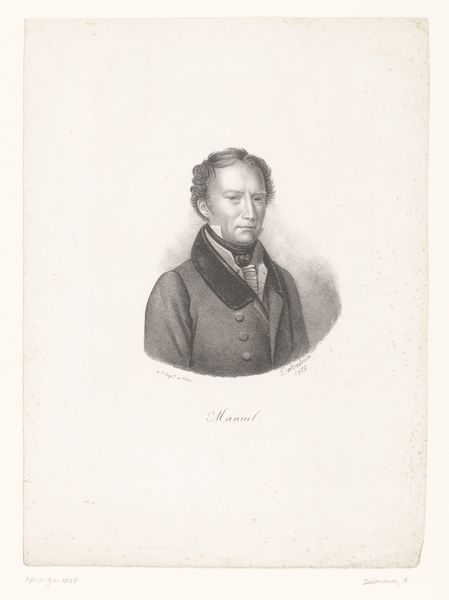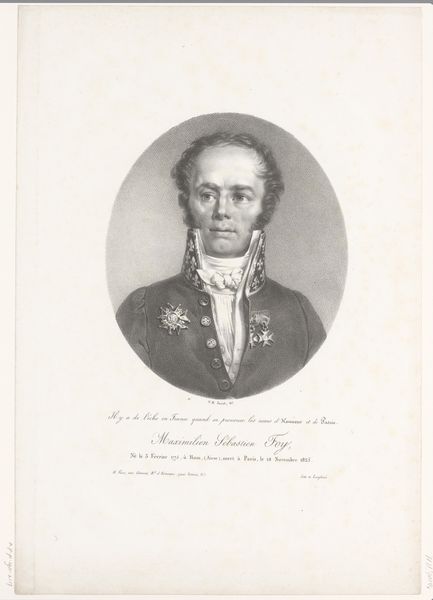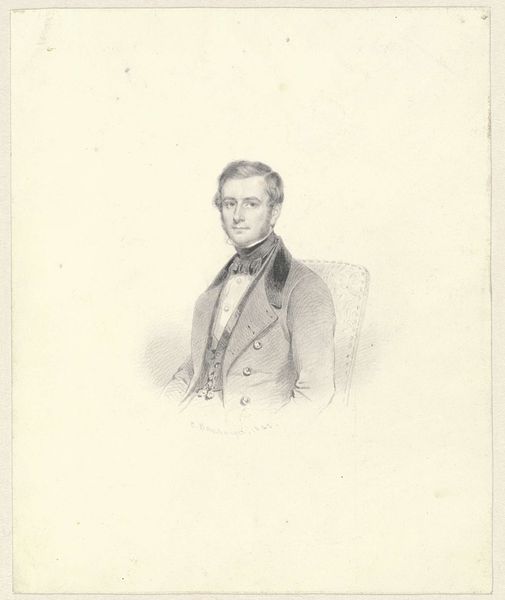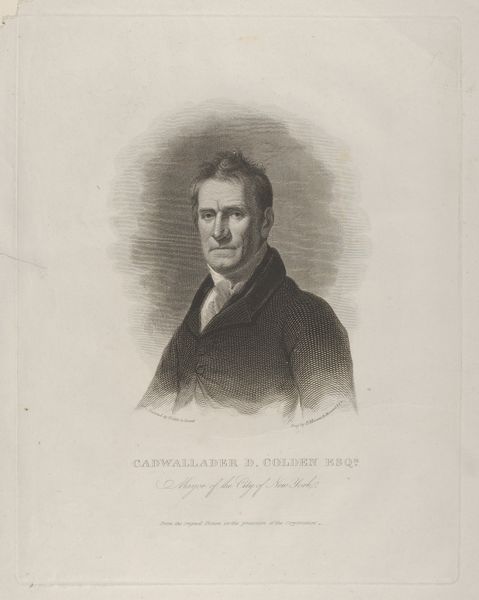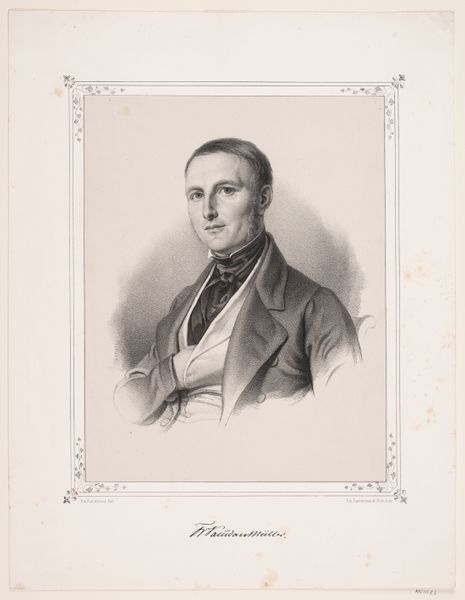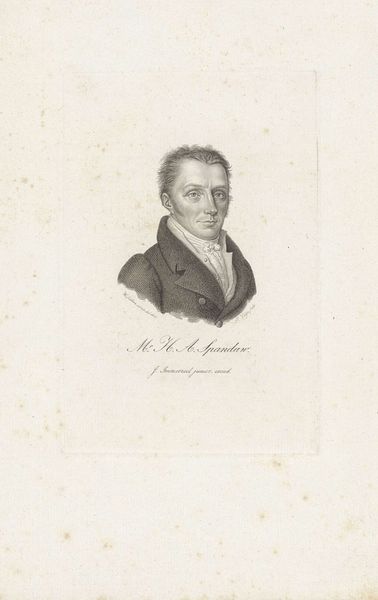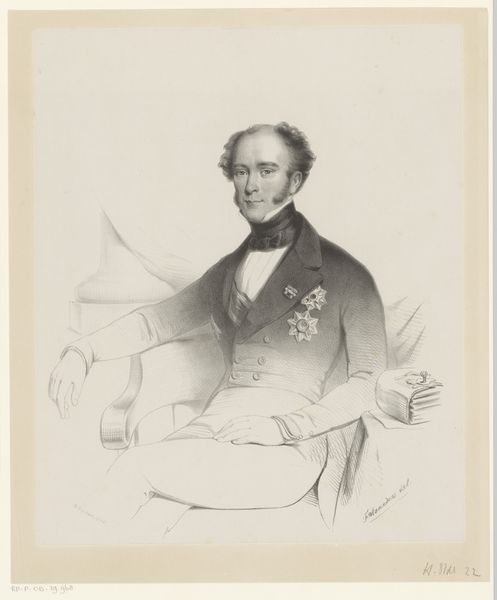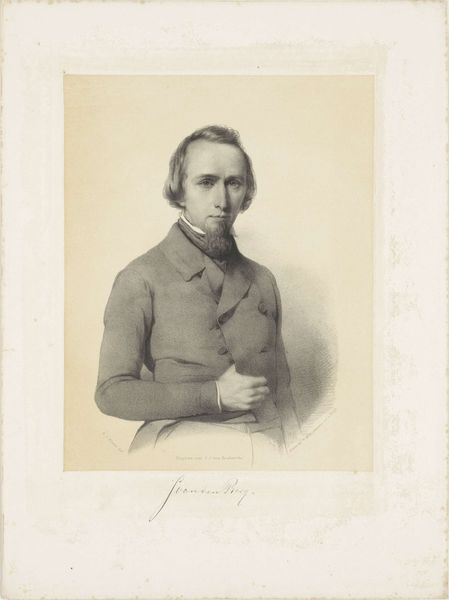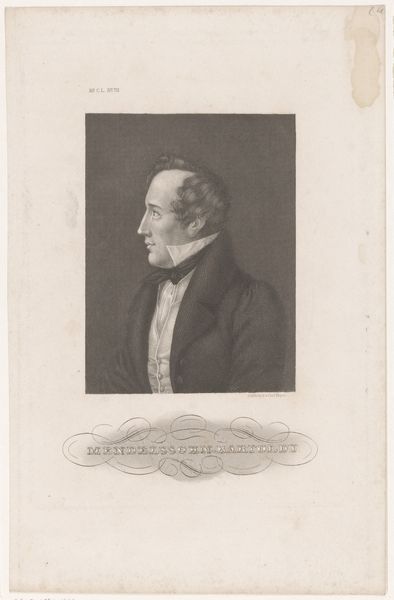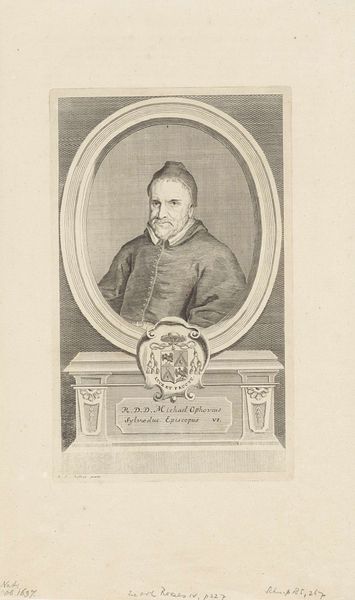
drawing, print, engraving
portrait
drawing
neoclacissism
19th century
portrait drawing
history-painting
engraving
calligraphy
Dimensions: height 566 mm, width 404 mm
Copyright: Rijks Museum: Open Domain
Curator: This is a portrait of Frederik, Prince of the Netherlands. It’s an engraving, created around 1831. Editor: My first impression is one of restrained power. The somber tones and formal pose convey authority, but there's also a quietness to it, a suggestion of introspection. Curator: It’s a fantastic example of Neoclassical portraiture in printmaking. Note the precision of the lines and the clear articulation of form achieved through engraving; and the paper stock too. Editor: And consider the symbolic weight carried by those Masonic emblems he's wearing. The square and compass—are markers of enlightenment ideals but were likely very significant signifiers to viewers at the time. He's literally wearing his allegiances. Curator: Exactly! These weren’t simply decorative but were material statements about Prince Frederik's beliefs, membership, and associated power structures. The engraving process itself allowed for reproduction, circulating his image and ideology more widely than a painted portrait ever could. Editor: Beyond his visible symbols, look at the way the artist used lighting and shadow. His face is quite illuminated, perhaps symbolic of transparency or forthrightness, while much of the background is kept muted. This could signify knowledge and visibility. Curator: It speaks volumes about how portraiture functions. Even in a "mass-produced" medium like engraving, every choice – the pose, the accessories, and of course, the skillful craftsmanship – adds to a very specific projection of the man and his position in society. Editor: We are, as always, viewing and decoding layered symbolism with powerful impact and reaching far beyond just the aesthetic choices made when portraying such a powerful figure at that time. Curator: Right, understanding the materials and production, the paper, ink, engraving…helps us interpret the image's circulation and social function within that period. It reinforces meaning in the present day when we get to examine it more carefully. Editor: Yes, thank you, considering these symbolic choices can give new understandings.
Comments
No comments
Be the first to comment and join the conversation on the ultimate creative platform.
